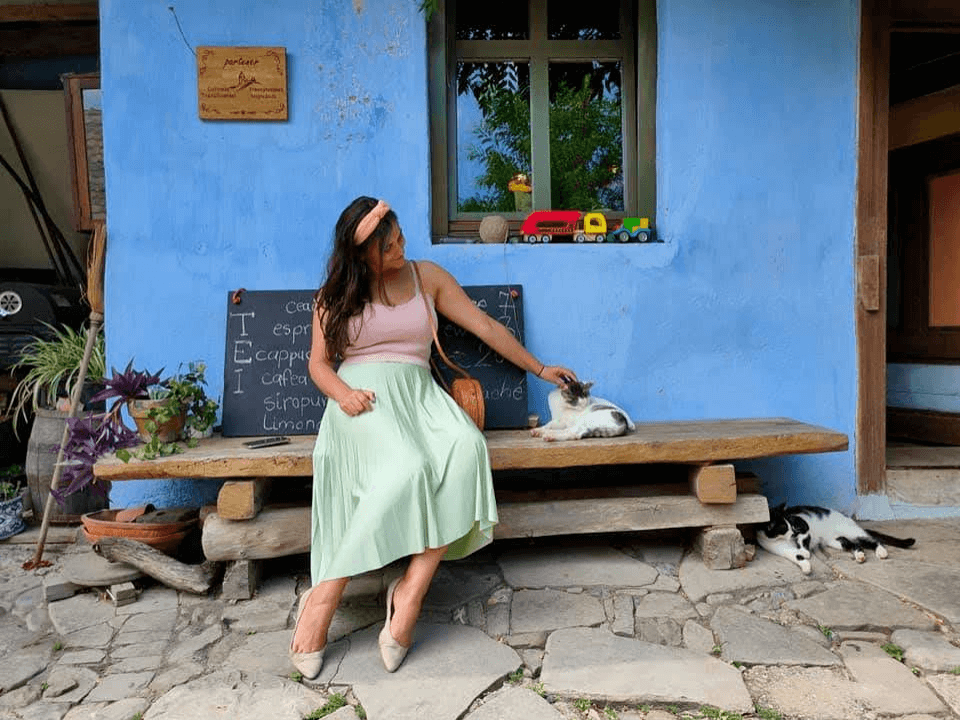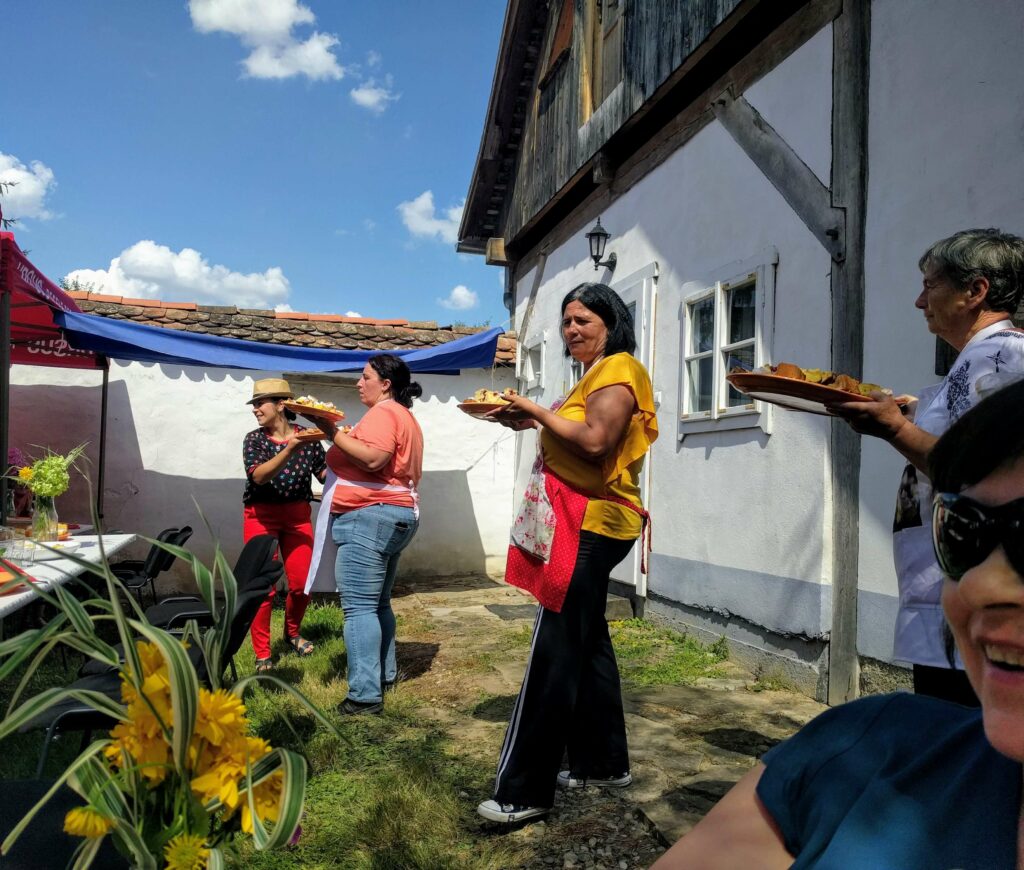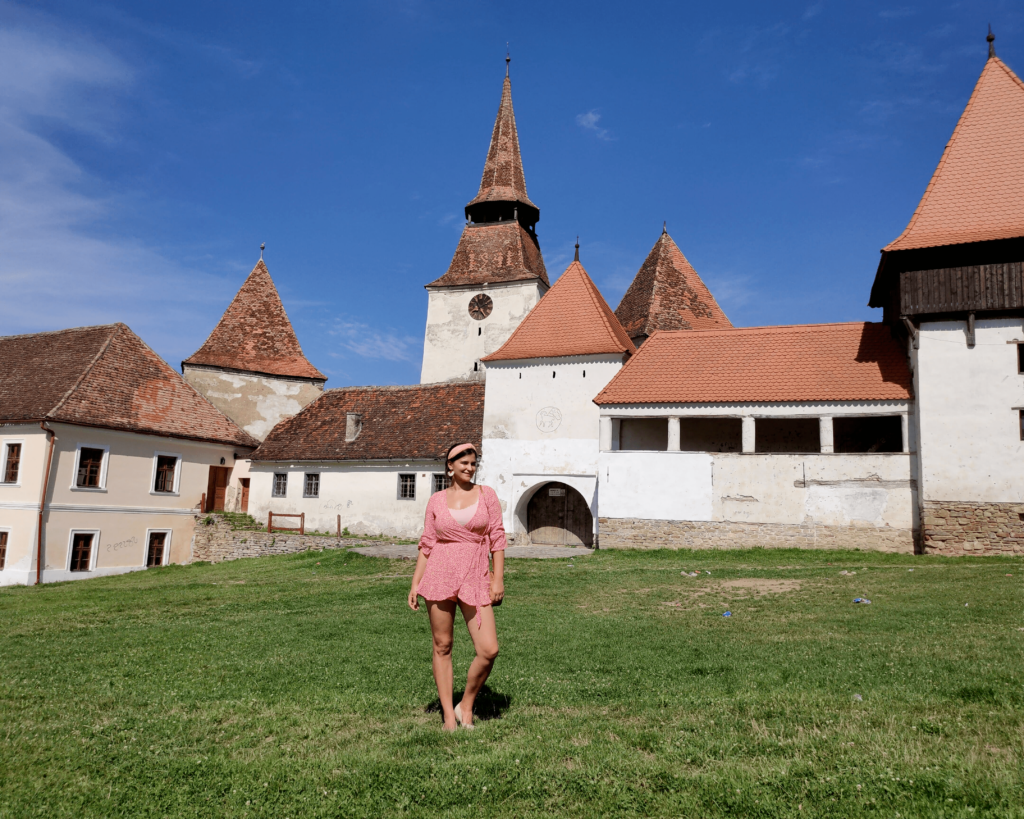SHARE
INFO
- DATE: 25-11-2020
- PLACE: Transylvania
COUNTRY OF PROVENANCE

Romania
RELATED ARTICLES

The village of Richis – Iulia around Transylvania, Romania
Richis is the first Saxon village I visited, it is located in the heart of Transylvania in Romania, near the medieval cities of Sighișoara and Mediaș.

Love for Transylvania – Iulia from Bucharest, Romania
I am Iulia, I live in Bucharest but my love is for the Saxon villages of Transylvania, where time seems to have stopped.
The village of Saschiz
Iulia around Transylvania, Romania
The village of Saschiz, or ‘the road village’, as many travelers know it, is divided in its very middle by the national road Brașov – Sighișoara, which makes it the most easy to access UNESCO village from Transylvania.
One might have the impression that a quick glimpse when passing through it by car is all that is required to have seen it all. It couldn’t be further from the truth! Even nowadays, the village boasts the medieval charm of those days and displays a large number of pastel-shuttered crimson-roofed Saxon houses, lined along the main road, somehow dwarfed by a giant tower. In Saschiz, nearly 600 Saxon houses are under UNESCO protection.
The village has a 700 year history and was previously populated by Szeklers (Hungarian population) until the end of the 13th century, when the Saxons took over and baptized it Kaissdit. Following the Saxon way of living, inspired by the German culture, the village started testifying the growth of a large number of guilds, with shoemakers, carpenters, potters and painters being the most famous of them all.
Saschiz has one impressive fortified church and a majestic clock tower that mesmerizes you with its stature. Some legends say that it stirred envy among the locals from the other villages, reason for which they tried to tear it down with ropes, without much success though. Nowadays, the story is used as a lovely explanation for its current crooked shape.
Towering a hill nearby, lies the peasant fortress, Burchreech (Fortress Hill), which served as a refuge for the locals in case of invasion. Adding to that, there is a well of 65 meters deep that allowed people to reach to the middle of the village through a tunnel.
The church
The Lutheran church in Saschiz is part of the UNESCO heritage group of fortified churches in Transylvania. Standing on the main road, one might feel small and insignificant compared to the impressive stature of the church that dwarfs everything around it, from houses to trees and hills.
The architecture of the church testifies to the turbulent times in this part of Europe – defensive structures and loopholes for the discharge of arrows or missiles. Back in the days, the borders of Transylvania were often attacked by the Ottoman threat, forcing the locals to hide in the village churches. In the church’s dome, one can find a curious time capsule (187 years) where those who built the dome, placed a parchment with their name, a message waiting to be opened and read.
Revival
After the fall of Communism, many Saxons left for Germany and nowadays there are only 70 Saxons left in the area, most of them seniors. However, the village displays a vivid community that helped with the revival of the village. They organise themselves exemplary through the Women Vicinity organisation and the ADEPT association. Let’s not forget the newly opened cafes, local gastronomy events and proactive entrepreneurship.
Food
The first time I visited Saschiz was on the occasion of the Haferland Festival – one of the largest events dedicated to the Transylvanian Saxon culture – a day in which I had the great joy to discover the village at its best: buzzing with life, activities and above all, amazing food.
And speaking of gastronomy, at Haferland I had the occasion to taste the delicious and unique rhubarb soup with smoked meat, prepared by the women from the Vicinity organisation. Yes, rhubarb! Apparently Saschiz is famous for its rhubarb dishes, and annually, in Saschiz, the Rhubarb festivity is organised, an event that gathers a large number of participants from across the country and abroad.
For hundreds of years, the Saxon ladies cooked with rhubarb – from jam delicacies to compote or soup. Nowadays, rhubarb has gained a new status as pizza topping, which would make any pineapple jealous and any Italian cringe or wonder..:) There is one more interesting delicacy that we did not have the opportunity to try yet – the local dulce de leche – but the time is not wasted to come back and try.
The rhubarb jam made Saschiz famous even across the borders. There is an online shop where people can order all the rhubarb goodies, as well as rare products such as pine or mint honey. The locals in Saschiz also make a special homemade bread, with a special thick crust, which is baked for about three hours.

Craft preservation
In the village, the Saschiz Pottery Centre was opened to the public in 2015, trying to revive the pottery art in Saschiz. In the past, Saschiz was renowned for its blue pottery made out of cobalt on which white motifs were hand-painted. The aim is to revive the manufacture of traditional local pottery, providing tourists and schoolchildren with the opportunity to take part in pottery workshops.12
Natural environment
To my surprise, there are several natural environment protection initiatives in the village. Thanks to the diversity of its meadows that boost a large array of 150 different plants (higher than other region in Europe), the village and its surroundings were integrated in the Natura 2000 initiative – a network of nature protection areas in the territory of the European Union. There is also the Transilvania Bike Trail Race, aimed to promote the 100 km mountain biking trails and unique natural, cultural and historical landscapes in Europe. The idea is to raise awareness of the unaltered beauty of the area in order to protect it better and have a basis for sustainable tourism in the area.

Last thoughts
Some of the thoughts that stayed with me after visiting Saschiz came with the occasion of the Haferland week when I got to attend a seminary held in the church by the village’s priest. Some of his wise words stayed with me, particularly in the turbulent times that Romania is living: “There is no need for hope to take action, and no need for success to persevere“- referring to the community revival of these long forgotten villages and communities.
Proximity to other places: Sighișoara is 17 km from Saschiz. Viscri village, part of the UNESCO World Heritage Site, is 15 km away, while Rupea Fortress is 35 km away. Some more information can be found online at: http://www.turism.saschiz.ro . Other attractions in Saschiz: The house on the hill, Tei Teahouse, Grandmother’s Cellar
Who I am
I’m Iulia, half Transylvanian born, based in Bucharest, with a background in political science. My passions are architecture, cooking, and quaint Saxon villages in Transylvania, rich in fascinating baroque architecture, unique fortified churches, and magnificent landscapes, where time often seems to have been standing still.
Caminante no hay camino, se hace camino al andar! (“there is no path, you make the path as you go”) is my favourite motto. I’m sometimes a work in progress and speak 5 languages.

